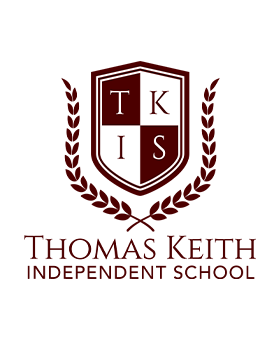Phonics National Curriculum
Introduction to Phonics in the National Curriculum
The phonics national curriculum is a fundamental component of literacy instruction in England’s primary education system.
Phonics serves as an essential methodology within the national curriculum, focusing on the relationship between sounds and their corresponding letters or groups of letters.
The English national curriculum integrates phonics into primary education, ensuring young learners develop vital reading skills from an early age.
Government guidelines stipulate the systematic teaching of phonics across primary schools to facilitate early literacy development.
The emphasis on phonics in the national curriculum addresses key educational objectives set forth by educational authorities, aiming to enhance students’ reading ability and comprehension.
Phonics programmes, as dictated by the national curriculum, are designed to be engaging and interactive, promoting a richer understanding of language among students.
Phonics strategies within the national curriculum involve synthetic phonics approaches, wherein students are taught to convert letters into sounds and blend them to form words.
The national curriculum phonics approach has been widely supported by educational experts as an effective method for laying a strong foundation for reading.
By systematically embedding phonics in the national curriculum, schools are better equipped to meet the diverse literacy needs of young learners.
The implementation of the phonics national curriculum is supported by resources and materials endorsed by various educational associations.
These resources aim to provide teachers with comprehensive tools to deliver effective phonics instruction in the classroom.
Such national curriculum phonics resources are regularly evaluated to ensure they align with educational standards and requirements.
At Thomas Keith Independent School, we recognise the importance of phonics in primary education and incorporate these practices into our teaching methodologies.
Understanding the importance of phonics in the national curriculum is crucial for teachers and educational consultants in delivering high-quality education and achieving optimum student outcomes.
Therefore, the phonics national curriculum remains a linchpin of literacy instruction, reinforcing the commitment to raising educational standards across the nation’s primary schools.
The Role of Phonics in Early Literacy Development
The phonics national curriculum plays a pivotal role in shaping early literacy development for children across England.
By systematically teaching students to decode words using synthetic phonics, the national curriculum phonics framework provides a robust foundation for reading proficiency.
A fundamental aspect of early literacy is the ability to connect sounds with letters or groups of letters, known as phonemes.
In this context, phonics instruction is integral as it enables children to blend phonemes together to read words fluently.
At Thomas Keith Independent School, we recognise that a strong understanding of phonics not only supports word recognition but also enhances spelling and reading comprehension skills.
Research indicates that phonics training leads to significant improvements in reading accuracy and speed.
The national curriculum phonics guidelines stipulate that phonics should be taught daily in primary schools.
This structured approach ensures consistency and enables students to progress from simple to complex language structures.
Moreover, the emphasis on phonics in the English national curriculum underscores its significance in closing the literacy gap among young learners.
For educators, the phonics national curriculum offers detailed programmes and resources to help assess pupil progress.
It encourages schools to adopt a systematic, synthetic phonics approach, prioritising high-quality teaching that is central to student success in literacy.
Furthermore, early literacy development is not only about reading but involves writing and speaking skills that are intertwined with phonics competencies.
The use of engaging resources and interactive methods in delivering phonics education enhances learning experiences and maintains student interest.
The national curriculum provides a consistent benchmark, ensuring that no matter where they live, children in England receive a high-standard phonics education.
By integrating phonics naturally into everyday learning, teachers cultivate a supportive environment where students are more likely to develop strong literacy skills early on.
In summary, the phonics national curriculum is a cornerstone of early literacy development, fostering a love for reading that can impact a child’s educational journey positively and profoundly.
Government Guidelines and Phonics Programmes
The phonics national curriculum mandates a systematic approach to teaching phonics within British primary schools, ensuring consistency and rigour across all programmes.
Guided by the government, these guidelines aim to enhance early literacy skills and provide a strong foundation for future educational success.
The Department for Education sets the framework for the phonics national curriculum, emphasising the importance of teaching synthetic phonics as an effective method for early reading development.
Government guidelines outline the expectations for phonics instruction, focusing on key outcomes such as phonemic awareness, decoding skills, and fluency in reading.
Programmes aligned with the national curriculum phonics must meet specific criteria to ensure they are comprehensive and adequately support the development of these skills.
Prominent phonics programmes such as Read Write Inc. and Letters and Sounds follow these guidelines to provide structured and engaging resources for teachers and students.
Additionally, the phonics screening check, administered at the end of Year 1, is a key component of the phonics national curriculum.
This assessment evaluates the progress of pupils in reading and identifying phonetic patterns, serving as a diagnostic tool to guide future teaching.
Educational advisers often collaborate with schools to implement phonics programmes in line with government standards, tailoring their approach to suit specific school contexts and needs.
By adhering to government guidelines, schools like Thomas Keith Independent School can ensure a consistent and effective phonics education, which is integral to building a robust literacy foundation for all students.
The alignment of these programmes with the phonics national curriculum not only supports teachers in delivering high-quality instruction but also benefits students in achieving measurable literacy outcomes.
![]()
Teaching Phonics: Strategies and Resources
The phonics national curriculum outlines essential strategies and resources designed to enhance the teaching of phonics across schools in England.
At Thomas Keith Independent School, we emphasise the integration of these strategies to ensure comprehensive phonics instruction.
A core strategy in teaching phonics is the synthetic phonics approach, which is pivotal in the phonics national curriculum.
This method involves teaching individual sounds (phonemes) before blending them to form words, allowing students to decode words effectively.
This systematic approach builds a strong foundation for reading by focusing on the relationship between letters and sounds.
Additionally, teaching phonics involves the use of multi-sensory resources.
These may include interactive games, visual aids, and tactile tools, all crucial in reinforcing phonemic awareness.
The phonics national curriculum encourages the use of technology, providing interactive software and digital phonics programmes to engage students in a dynamic learning environment.
Guided reading sessions form another integral part of the phonics teaching strategy.
By incorporating books specifically tailored to support phonics learning, educators can align reading materials with the phonics national curriculum standards.
These sessions are crucial for developing fluency and confidence in young readers.
Moreover, it is vital for teachers to undergo continuous professional development.
Training provided by organisations like Read Write Inc. and Letters and Sounds offers invaluable insights into effective phonics instruction.
Such programmes are aligned with the phonics national curriculum, ensuring teachers are equipped with the latest methodologies and resources.
Collaboration among teachers is also encouraged to share effective practices and resources.
This collective approach aids in refining phonics teaching strategies and adapting to the diverse needs of learners within the curriculum framework.
Finally, engaging parents in phonics education is crucial.
By educating parents about the phonics national curriculum and providing them with home-based phonics resources, schools can extend learning beyond the classroom.
Parental involvement is known to be a significant factor in reinforcing phonics skills at home and fostering a supportive learning environment.
In conclusion, at Thomas Keith Independent School, our phonics teaching strategy is deeply rooted in the guidelines of the phonics national curriculum.
Through a blend of synthetic phonics techniques, multi-sensory resources, guided reading, and continuous teacher development, we aim to deliver an enriching phonics education experience.
Our commitment to these strategies ensures that our students develop strong literacy foundations, essential for their future academic success.
Influence of Experts and Educational Bodies
The national curriculum for phonics has been significantly shaped by the insights and recommendations of numerous experts and educational bodies.
These influencers have played a vital role in ensuring that the curriculum remains effective and relevant in teaching phonics to young learners.
Experts such as Ruth Miskin, renowned for the Read Write Inc. programme, have provided valuable input into how phonics should be implemented in primary education.
Miskin’s contributions have underlined the importance of synthetic phonics, where individual sounds are taught in isolation before being blended together to form complete words.
This approach aligns with the findings of various studies that advocate for phonics as the foundation of early literacy development.
Moreover, educational bodies like the Department for Education in the UK have issued guidelines and standards for the phonics national curriculum to ensure consistency across schools.
These government guidelines are based on consultations with academic and advisory groups who have a deep understanding of cognitive development in children.
Their influence is evident in the structured progression of phonics skills that is mandated in the national curriculum phonics guidelines.
The phonics national curriculum has also benefited from the scrutiny and feedback of educational consultants.
Figures such as Sir Jim Rose have authored significant reports which highlight the necessity of phonics in early education.
The Rose Review, for instance, played a pivotal role in solidifying the place of phonics in the national curriculum, thus affirming its status as a critical component of literacy instruction in primary schools.
In summary, the concerted efforts of experts, government bodies, and advisory groups have shaped the phonics national curriculum into a robust framework that supports the literacy development of young learners.
Their ongoing influence ensures the curriculum remains dynamic and responsive to new educational research and insights.
At Thomas Keith Independent School, we continuously align our teaching strategies with these standards to provide high-quality education that adheres to the best practices in phonics instruction.
Challenges and Criticisms of Phonics Instruction
The phonics national curriculum, while widely implemented, is not without its challenges and criticisms.
Phonics instruction is primarily challenged by debates over its efficacy compared to other literacy teaching methods.
Some educators and experts argue that the phonics approach is overly rigid and does not accommodate the diverse learning styles of students.
Critics suggest that an exclusively phonics-focused curriculum potentially overlooks the importance of whole language learning, which emphasises comprehension and context in reading.
Moreover, the phonics national curriculum has been scrutinised for not sufficiently addressing the needs of children with learning difficulties such as dyslexia.
There is concern that the emphasis on synthetic phonics might not be the most effective method for all learners, especially those with specific educational needs.
While phonics instruction aims to provide a systematic framework for teaching reading, it has been criticised for its lack of flexibility and adaptability.
The perception that phonics alone can fully equip students with comprehensive literacy skills is contested by various educational researchers and literacy experts.
Another criticism lies in the implementation of phonics assessment tests, which some argue place undue pressure on young learners and limit teachers’ autonomy to tailor instruction based on individual classroom dynamics.
Despite these challenges, it is recognised that phonics does play a crucial role in early literacy by providing foundational skills in decoding and pronunciation.
However, ongoing debates highlight the importance of balancing phonics with other literacy teaching methods within the national curriculum.
Thomas Keith Independent School places emphasis on addressing these criticisms by incorporating a balanced literacy approach, ensuring students receive well-rounded reading instruction.
Ultimately, achieving balanced literacy education requires ongoing dialogue and refinement of the phonics national curriculum to ensure it meets diverse student needs.
![]()
Conclusion: The Future of Phonics in Education
The phonics national curriculum continues to play a pivotal role in shaping the landscape of early literacy education.
As educational practices evolve, the phonics national curriculum is expected to adapt to the demands of modern teaching methodologies, ensuring that phonics instruction remains relevant and effective.
The future of phonics in education looks promising, with an emphasis on integrating technology and innovative teaching methods to enhance learning outcomes.
Efforts by educational bodies and experts will likely focus on refining phonics strategies to meet diverse learner needs within the framework of the phonics national curriculum.
At Thomas Keith Independent School, we recognise the importance of maintaining a dynamic curriculum that embraces new developments in phonics education.
As such, we are committed to staying at the forefront of educational advancements, ensuring that our students receive the best possible instruction within the confines of the phonics national curriculum.
In conclusion, the future of phonics in education is bright, with the phonics national curriculum serving as a foundation for continued growth and success in literacy development.




